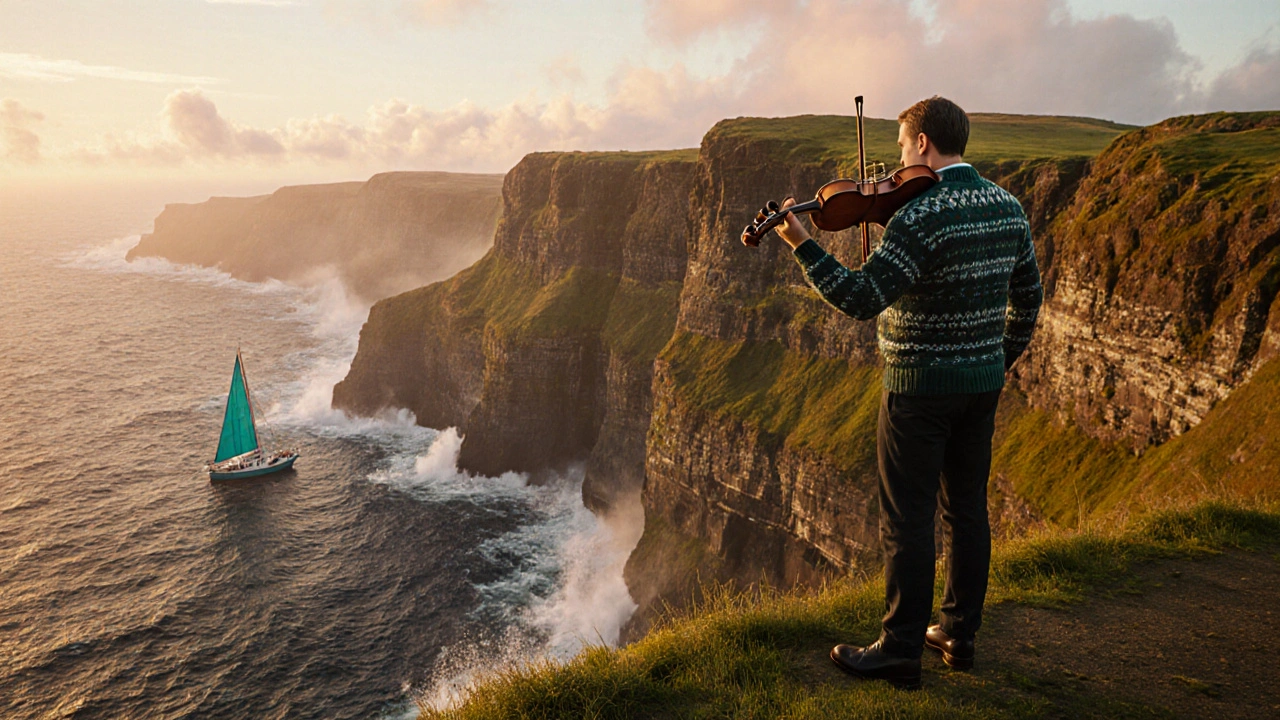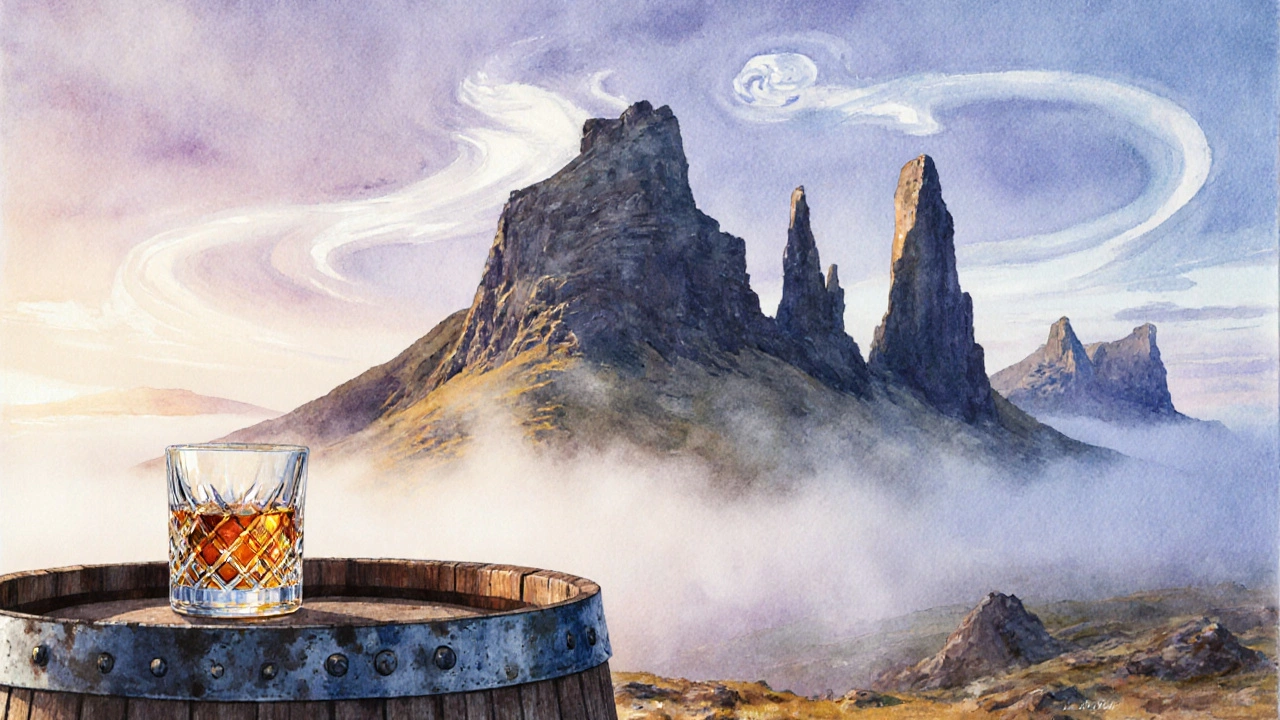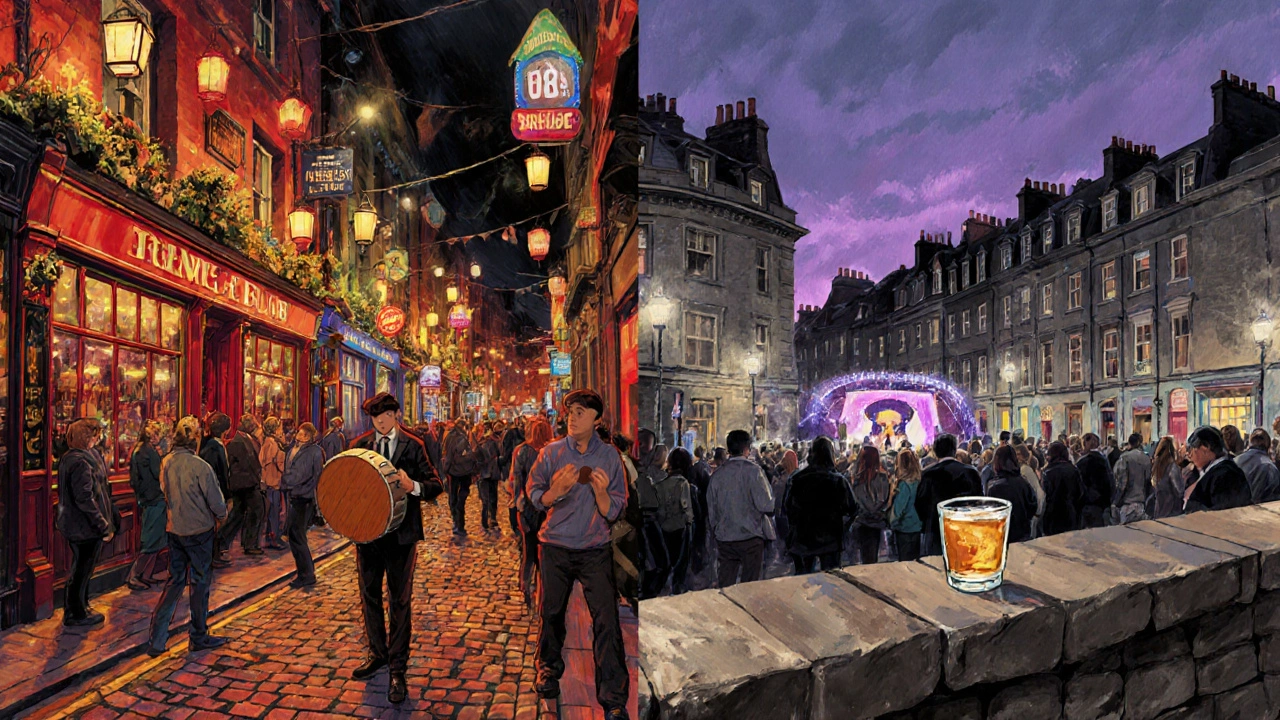
Deciding between Ireland vs Scotland can feel like choosing between two great stories-both offer lush green scenery, vibrant pubs, and centuries‑old castles, yet each delivers a distinct vibe.
Key Takeaways
- Ireland shines for coastal drama, lively music scenes, and a warm, welcoming atmosphere.
- Scotland impresses with dramatic highlands, historic urban centers, and a rugged, adventurous feel.
- Both countries are easy to reach from the UK, but flight costs and internal transport differ.
- Budget‑friendly options exist in both, though Ireland tends to be slightly cheaper for food and accommodation outside the capitals.
- Pick based on what you crave most: sea‑side walks and folk sessions (Ireland) or mountain hikes and whisky tours (Scotland).
What Makes Ireland Unique?
When people talk about Ireland is a sovereign island nation on the western edge of Europe, known for its rolling hills, rugged coastline, and friendly locals, the first thing that comes to mind is its endless green. From the dramatic Cliffs of Moher, where waves plunge 200feet below, to the historic streets of Dublin, a vibrant capital famed for literary pubs and a thriving tech scene, the island packs variety into a compact size.
Beyond the coast, the west offers the cultural hub of Galway, where street musicians, art festivals, and a bustling market create a permanent celebration.
What Sets Scotland Apart?
Scotland is a constituent nation of the United Kingdom, celebrated for its dramatic highlands, historic castles, and world‑renowned whisky. The capital, Edinburgh, combines a medieval Old Town with a Georgian New Town, and every August the city bursts into a global festival frenzy.
The Isle of Skye offers jagged cliffs, fairy‑tale waterfalls, and some of the best hiking in the British Isles, while the Highlands stretch northward, inviting explorers to chase lochs, glens, and historic battlefields.
Side‑by‑Side Snapshot
| Aspect | Ireland | Scotland |
|---|---|---|
| Landscape | Coastal cliffs, rolling green pastures, sea‑side villages | Mountainous highlands, dramatic lochs, rugged islands |
| City Vibe | Dublin - lively pubs, literary heritage, modern tech hub | Edinburgh - historic festivals, royal architecture, cooler nightlife |
| Cost (mid‑range) | Accommodation ~15% cheaper; meals $10‑$15 for a hearty pub dish | Accommodation slightly higher; meals $12‑$18 for similar fare |
| Weather (Sept‑Oct) | Mild, rain‑spotted; averages 55°F (13°C) | Cooler, windier; averages 50°F (10°C) |
| Transport | Extensive bus network; train limited to east coast; car rental common | Well‑connected rail (e.g., ScotRail); bus services; scenic drives popular |
| Signature Experiences | Traditional music sessions, cliff walks, Gaelic festivals | Whisky distillery tours, highland treks, historic castles |

Nature Lovers: Who Wins?
If your travel bucket list reads “hike to a sea cliff” and “listen to live fiddles by a harbor,” Ireland’s coastal routes and pubs deliver instantly. The Cliffs of Moher provide a vertical drop that rivals any alpine trail, and the Wild Atlantic Way lets you swing from one small fishing village to the next, each with its own story.
Conversely, if you crave glacier‑like peaks, mist‑shrouded lochs, and the chance to sight a golden eagle, Scotland’s Highlands and Isle of Skye are unbeatable. The Old Man of Storr or the Quiraing on Skye feels like stepping onto another planet, while Glen Coe offers a blend of tragic history and unforgettable scenery.
Cultural Pulse: City Life and Nightlife
Dublin pulses with a youthful energy. The Temple Bar district hosts nightly music sessions, and the city’s literary pubs let you sip a Guinness while reading Joyce. Foodies enjoy a growing gastro scene-think farm‑to‑table kitchens paired with craft brews.
Edinburgh offers a more polished vibe. Summer festivals draw global talent, while the Royal Mile provides centuries of history at your feet. For whisky lovers, a tour of the historic distilleries on the city’s fringe is a must‑do.
Both cities cater to night owls, but Dublin leans toward casual, rowdy pubs; Edinburgh offers cocktail bars and theatre evenings.
Practicalities: Getting There and Getting Around
Flights from London to Dublin average £70‑£130 round‑trip, while London‑Edinburgh flights sit around £80‑£150. Direct trains from London to Dublin require a ferry crossing, adding time, whereas the Eurostar‑plus‑train route to Edinburgh is seamless.
Once on the islands, renting a car gives you the most freedom in Ireland-most attractions are spread along the coast. Scotland’s excellent rail network makes day trips from Edinburgh to the highlands easy without a car, though a rental is handy for island hopping (e.g., Skye).
Both countries are part of the Common Travel Area, so UK passport holders need no visa; EU visitors enjoy similar freedom, but always double‑check post‑Brexit rules.

Decision Checklist: Which Fits Your Travel Style?
- Do you prioritize sea‑side scenery and live music? Choose Ireland.
- Do mountain hikes and whisky tastings top your list? Pick Scotland.
- Is a lower overall budget important? Ireland’s rural inns tend to be cheaper.
- Do you need a reliable public‑transport network? Scotland’s rail system gives you more flexibility without a car.
- Are you traveling in September‑October? Expect milder weather in Ireland, though both can be rainy.
Next Steps: Turning Your Choice into a Trip
- Book flights early-mid‑week fares drop 15‑20%.
- If you’re leaning Ireland, reserve a car through a Dublin agency; a compact model costs about €30 per day.
- For Scotland, snag a rail pass (ScotRail Explorer) if you plan multiple city‑to‑countryside hops.
- Look for local festivals: Galway International Arts Festival (July), Edinburgh Fringe (August).
- Pack layers-rain jackets, waterproof shoes, and a warm sweater for highland evenings.
Frequently Asked Questions
Which country is cheaper for a 7‑day trip?
Overall, Ireland tends to be a few euros cheaper per night in budget hotels and for meals, especially outside Dublin. However, Scotland’s extensive rail discounts can offset transport costs, so the total spend often balances out depending on your itinerary.
Do I need a visa if I’m an EU citizen?
No. Both Ireland and Scotland (as part of the UK) are within the Common Travel Area, allowing free movement for EU citizens with a valid passport or ID card.
What’s the best time of year for outdoor activities?
Late spring (May‑June) offers longer daylight and milder weather for both coastal walks in Ireland and highland treks in Scotland. Early autumn (September) remains pleasant and sees fewer crowds.
Can I see both countries in a single trip?
Yes. Many travelers fly into Dublin, spend 3‑4 days, then take a short flight to Edinburgh or a ferry‑train combo from Dublin to Belfast and onward to Scotland. A 10‑day itinerary comfortably covers highlights of both.
Which destination is better for families?
Both are family‑friendly, but Ireland’s compact size and gentle coastal walks make it easier for younger kids, while Scotland offers interactive castles and wildlife parks that captivate older children.
